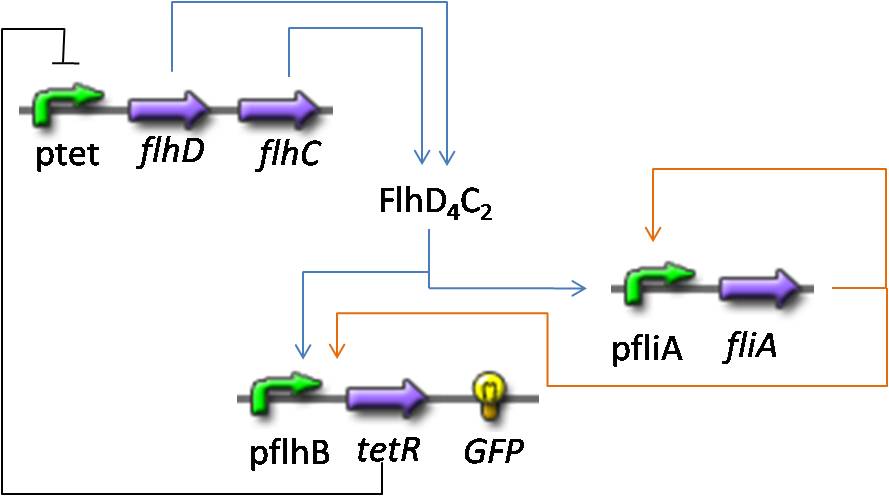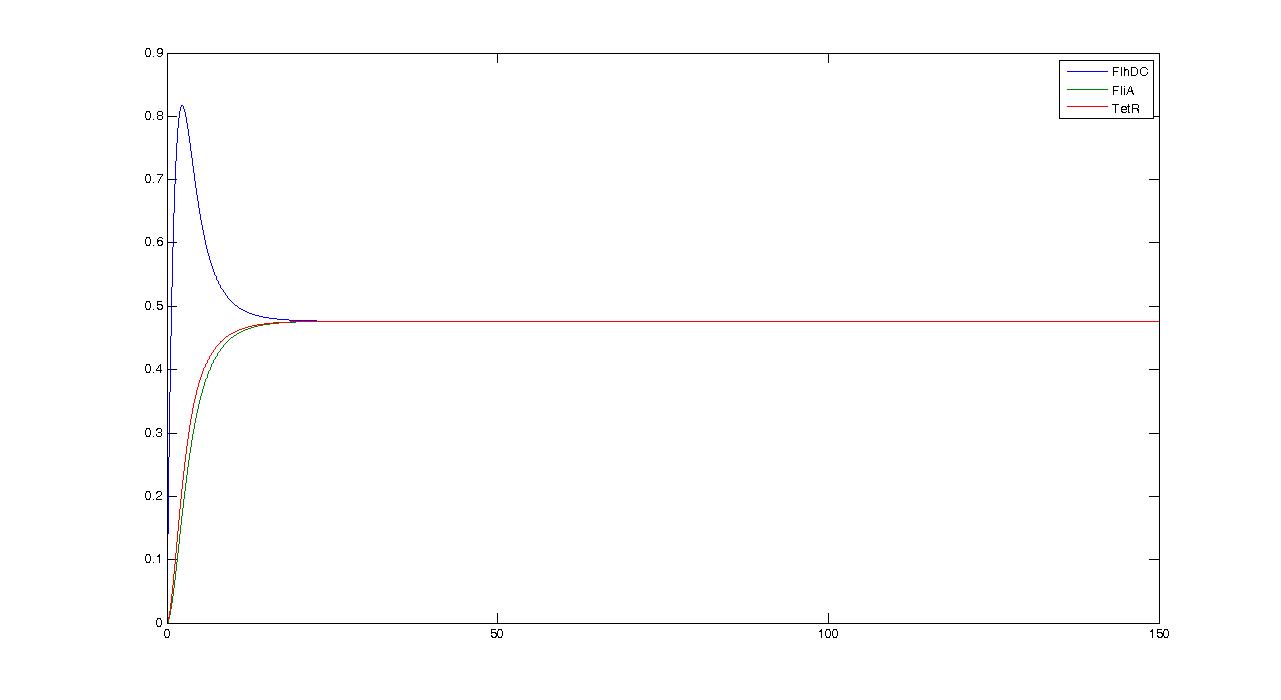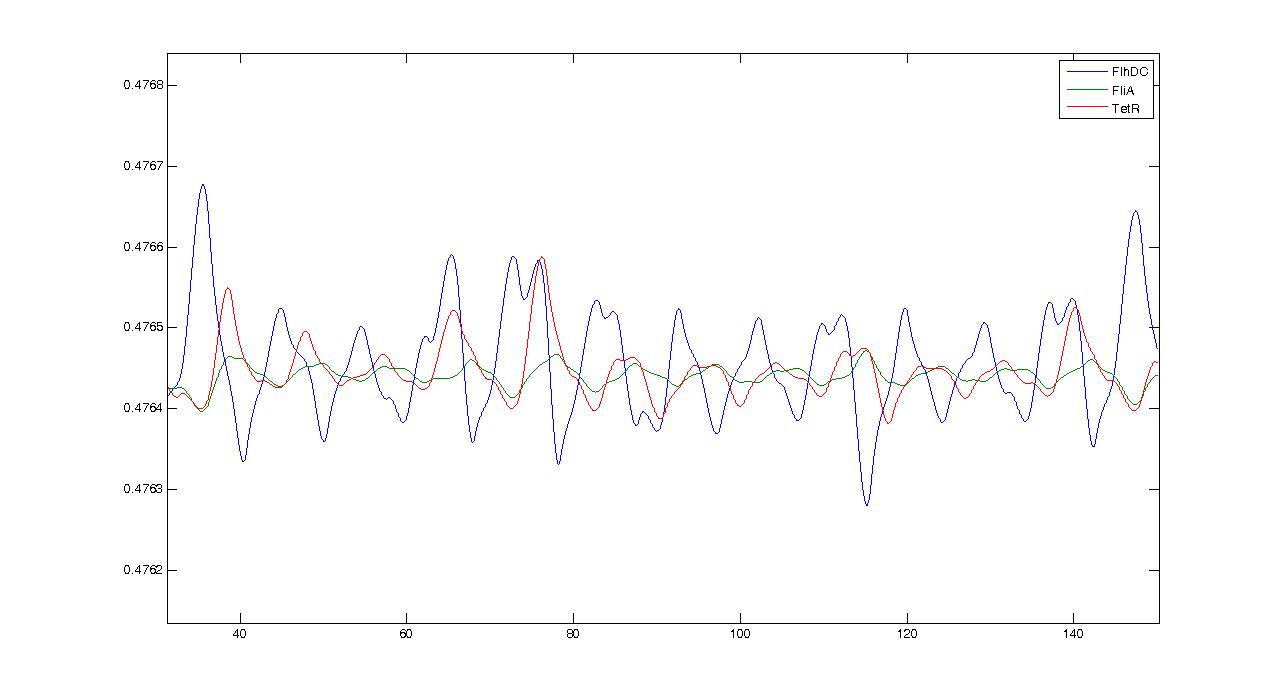Team:Paris/Modeling/BOB/Simulations page travail
From 2008.igem.org
(Difference between revisions)
(→Understanding) |
(→Reaction and directions for the wet-lab) |
||
| Line 56: | Line 56: | ||
=== Understanding the dynamics === | === Understanding the dynamics === | ||
| - | === | + | === Using these elements to improve the system and give directions to the wet-lab === |
Revision as of 22:37, 6 October 2008
|
(Under Construction : synchronisation and whole system)
Simulations and Mathematical analysis
OscillationsShort System
Observations
By looking at this simulation, we could think that it is going to be hard to get oscillations... However when we zoom, we get this more reassuring view : Understanding the dynamicsUsing these elements to improve the system and give directions to the wet-lab |
|||||||||||||||||||
 "
"



